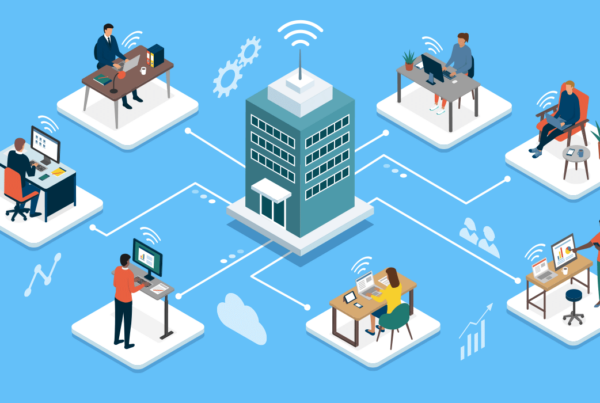Once referred to as the “Winter Blues”, Seasonal Affective Disorder (SAD) is now a recognized recurrent depressive disorder that can have debilitating effects on the affected person. Unfortunately, this can also have negative effects on employers and can result in reduced productivity and increased absenteeism in the workplace. In this blog, we look at what Seasonal Affective Disorder is, and how employers can help their employees to manage it.
What is Seasonal Affective Disorder?
According to the Mayo Clinic, Seasonal Affective Disorder is defined as a recognized recurrent depressive disorder that begins in autumn/winter and usually ends in Spring. SAD was first documented by Dr. Norman E. Rosenthal, a South African doctor who moved to the USA and experienced his own seasonal mood change. Dr. Rosenthal decided to conduct a study in which he found that patients were suffering from a type of depression ‘ that seemed to respond to changes in climate and latitude’ Reminiscing on his own experience of SAD he said “When the days became short and dark I personally experienced a draining away of energy,”
Since then, the condition has become much more widely recognized. While many are all too familiar with the lull in our mood after Christmas, almost 2 million people globally suffer from some form of Seasonal Affective Disorder each year, with the nature and severity varying from person to person.
Symptoms of SAD include lethargy, decreased concentration, a persistent low mood, irritability, and a loss of interest in everyday activities. The specific cause of SAD remains unknown however it is believed that it is caused by the decreased level of sunlight which disrupts the body’s natural clock and leads to a drop in serotonin levels.
The effect of Seasonal Affective Disorder in the workplace
While everyone experiences days where they are not feeling 100% themselves, sufferers of SAD struggle to complete everyday tasks over a much longer time frame. This has been exasperated by the pandemic, where many employees are working from home and tend to get less sunlight and less fresh air than when they had a commute to the office.
Sufferers of SAD tend to have lower productivity levels overall and may find it difficult to meet targets. This has a negative impact on the employee’s colleagues who may see an increase in their workload to help complete any unfinished tasks.
Absence levels also tend to rise in the Winter both from illnesses associated with the colder weather, but also because employees are more likely to call in sick when they are feeling low.
Mental health is a major cause of long-term absence in the workplace and it is a difficult one for employers to manage. Absenteeism due to mental health and SAD holds a significant financial burden on employers, however, it is important not to cultivate a culture where employees feel compelled to work at a detriment to themselves.
How to combat SAD in the workplace?
Employers must recognize that Seasonal Affective Disorder is a recognized condition and treat it as such. Supporting employees’ mental health should be the number one priority, while also taking steps to minimize the effect on the workplace. It is no secret that happy employees are harder-working employees, so here are five ways that employers can help their employees combat Seasonal Affective Disorder:
1. Awareness and Conversation
The number one rule for any issue relating to well-being and mental health is that awareness and communication are key. Employers should prioritize educating their workforce on mental health and raising awareness of SAD. Employees that feel supported by their employer are less likely to be absent from work, and more likely to reach out for help.
Senior managers should be trained to spot the signs and symptoms of SAD to enable them to empathetically support their employees.
2. Support for Remote Working employees
Remote working is something we have become accustomed to over the last number of years, however, sometimes it can be just that – Remote. Employees working from home may face heightened feelings of isolation and loneliness, as well as a sense of detachment from their colleagues due to the lack of communication.
Remote and flexible working can be a fantastic benefit to all employees, but it’s important they are fully supported by their managers. Regular check-in sessions where employees can voice opinions, questions, and concerns are essential to combat remote working isolation. Employees working from home still need to feel that they ‘belong’ in the organization, and may miss the social aspects of being in the office. Social check’s can also be a great way to catch up, maybe for an e-cup of tea or a lunchtime chat to talk about non-work topics.
3. Encourage employees to get outside
Working in the winter by its very nature impacts an employee’s work-life balance due to the sense that there are fewer hours in the day. Whether working from home or working in the office, the dark evenings and dreary weather means employees are less likely to take part in after-work activities such as going for a walk or run.
Employers can help their employees by encouraging them to get away from their desks at regular intervals to go for a walk or get a coffee. Lunchtimes in particular are a great time for employees to get out for a walk and get some fresh air. The more natural light and air the better when it comes to helping employees to combat SAD.
4. Improve availability of natural daylight
As previously mentioned, the availability of natural light is important for promoting wellness. For sufferers of SAD, this is especially true and they would benefit from being in an area exposed to natural light. Giving employees the option to hotdesk may allow them to choose an area that best suits them and give them a choice to move to a desk with more light.
If that is not possible, employers could allow the use of light therapy boxes, a form of light therapy that uses fluorescent lights to mimic natural sunlight.
5. Encourage a healthy lifestyle
Ultimately the best way an employer can help employees to combat SAD is by encouraging a healthy lifestyle overall. This includes encouraging employees to eat a healthy diet, get plenty of exercise and have a good work-life balance.
Some simple and actionable ways to do this are providing healthy snacks such as fruit in the office or starting a steps challenge with a suitable prize at the end such as a gym membership.
Final Thoughts
There is a lot that employers can do to help employees suffering from SAD, however, the first step is establishing that an employee has the condition in the first place. Managers should check in with employees regularly, and be able to spot when something is not quite right.
An easy and inexpensive way to get a sense of your workforce’s state of wellness is to conduct regular, voluntary well-being surveys and find out from the employees themselves how they feel. Employees like to feel that their employers genuinely care about them and will try to understand what they are going through. Businesses that can successfully show that they support their employee’s emotional well-being are sure to see an increase in employee satisfaction and engagement as well as a decrease in SAD-related Absenteeism.
Did you know that with Softworks, you can create easy-to-use tailored surveys within the system? These can be useful for many different purposes such as that described above, but also for other uses such as tracking symptoms of Covid-19, assessing training requirements, and much more. For more information on how Softworks can transform your workforce, contact us today for an obligation-free demo.









